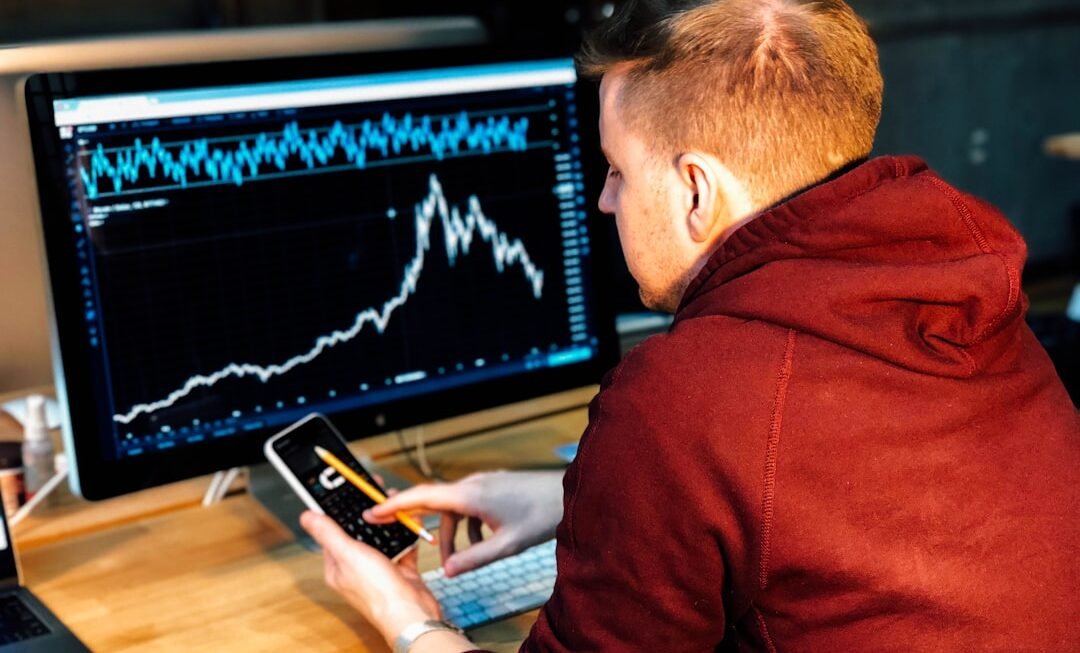The integration of artificial intelligence (AI) into financial trading has marked a transformative shift in how markets operate. Traditionally, trading relied heavily on human intuition, experience, and analysis, but the advent of AI technologies has introduced a new paradigm that leverages vast amounts of data and sophisticated algorithms. AI systems can analyze market trends, execute trades at lightning speed, and adapt to changing market conditions in real-time.
This evolution is not merely a trend; it represents a fundamental change in the financial landscape, where data-driven decision-making is becoming the norm. As financial markets grow increasingly complex and interconnected, the need for advanced analytical tools has never been more pressing. AI technologies, particularly machine learning and deep learning, have emerged as powerful allies for traders and financial institutions.
By harnessing the capabilities of AI, traders can gain insights that were previously unattainable, allowing them to make more informed decisions. The implications of this shift extend beyond individual trading strategies; they influence market dynamics, regulatory frameworks, and the overall efficiency of financial systems.
Deep Learning in Financial Trading
Deep learning, a subset of machine learning characterized by neural networks with multiple layers, has gained significant traction in financial trading. This technology excels at identifying patterns within large datasets, making it particularly well-suited for analyzing historical price movements, trading volumes, and other market indicators. For instance, hedge funds and proprietary trading firms have begun employing deep learning models to predict stock price movements based on historical data.
These models can process thousands of variables simultaneously, enabling them to uncover intricate relationships that human analysts might overlook. One notable application of deep learning in trading is the development of algorithmic trading strategies that adapt to market conditions. For example, firms like Renaissance Technologies have utilized deep learning algorithms to create models that continuously learn from new data inputs.
These models can adjust their trading strategies in real-time based on market fluctuations, leading to improved performance and reduced risk. The ability of deep learning systems to learn from vast amounts of unstructured data—such as news articles or social media sentiment—further enhances their predictive capabilities, allowing traders to stay ahead of market trends.
Natural Language Processing (NLP) in Financial Trading
Natural Language Processing (NLP) is another critical area where AI is making significant inroads in financial trading. NLP enables machines to understand and interpret human language, which is invaluable for analyzing news articles, earnings reports, and social media sentiment. By processing textual data, traders can gain insights into market sentiment and potential price movements that may not be immediately apparent through numerical analysis alone.
For instance, sentiment analysis tools powered by NLP can scan thousands of news articles and social media posts to gauge public sentiment regarding a particular stock or sector. If a company announces a new product or faces a scandal, NLP algorithms can quickly assess the tone of the coverage and provide traders with actionable insights. Companies like Bloomberg and Thomson Reuters have integrated NLP capabilities into their platforms, allowing traders to access real-time sentiment analysis alongside traditional market data.
This integration enhances decision-making by providing a more holistic view of market dynamics.
How AI is Revolutionizing Market Analysis
AI is revolutionizing market analysis by enabling traders to process and analyze data at an unprecedented scale and speed. Traditional methods of market analysis often involve manual data collection and interpretation, which can be time-consuming and prone to human error. In contrast, AI algorithms can sift through vast datasets—ranging from historical price data to economic indicators—within seconds, identifying trends and anomalies that may influence trading decisions.
Moreover, AI-driven analytics tools can provide predictive insights that enhance traders’ ability to forecast market movements. For example, machine learning models can analyze historical price patterns alongside macroeconomic indicators to predict future price trends with remarkable accuracy. This capability allows traders to make more informed decisions based on data-driven insights rather than relying solely on intuition or experience.
As a result, financial institutions are increasingly adopting AI-powered analytics platforms to gain a competitive edge in the fast-paced world of trading.
The Impact of AI on Trading Strategies
The impact of AI on trading strategies is profound and multifaceted. One of the most significant changes is the shift towards quantitative trading strategies that rely heavily on data analysis and algorithmic execution. Traders are increasingly using AI algorithms to develop systematic trading strategies that can identify profitable opportunities based on predefined criteria.
These strategies often incorporate elements such as statistical arbitrage, trend following, and mean reversion. For example, quantitative hedge funds like Two Sigma and AQR Capital Management have successfully implemented AI-driven trading strategies that leverage vast datasets to identify mispriced assets. By employing sophisticated algorithms that analyze historical price movements and correlations between assets, these firms can execute trades with precision and speed that would be impossible for human traders.
Additionally, the ability of AI systems to backtest strategies against historical data allows firms to refine their approaches continuously, optimizing performance over time.
AI’s Role in Risk Management and Compliance
AI in Risk Management: Enhancing Practices in Financial Institutions
AI systems play a crucial part in enhancing risk management practices within financial institutions. By analyzing vast amounts of data in real-time, AI systems can identify potential risks and anomalies that may indicate fraudulent activity or market volatility.
### Identifying Potential Risks and Anomalies
For instance, machine learning algorithms can monitor trading patterns to detect unusual behavior that could signal insider trading or market manipulation.
### Ensuring Regulatory Compliance
Furthermore, AI-driven risk management tools can help firms comply with regulatory requirements by automating compliance processes and ensuring adherence to industry standards. For example, AI systems can analyze transaction data to identify potential compliance breaches or flag suspicious activities for further investigation.
### Streamlining Compliance Efforts
This proactive approach not only mitigates risks but also streamlines compliance efforts, allowing firms to focus on their core trading activities while maintaining regulatory integrity.
The Rise of AI-Powered Trading Platforms
The rise of AI-powered trading platforms has democratized access to advanced trading tools for both institutional investors and retail traders. These platforms leverage AI algorithms to provide users with real-time insights, automated trading capabilities, and personalized investment recommendations. As a result, even individual investors with limited experience can benefit from sophisticated trading strategies that were once reserved for institutional players.
Platforms like eToro and Robinhood have integrated AI features that enhance user experience by providing tailored investment advice based on individual risk profiles and market conditions. Additionally, robo-advisors powered by AI algorithms can automatically manage investment portfolios for users, optimizing asset allocation based on real-time market data. This shift towards AI-driven platforms not only empowers individual investors but also fosters greater competition within the financial services industry.
Challenges and Limitations of AI in Financial Trading
Despite the numerous advantages of AI in financial trading, several challenges and limitations persist. One significant concern is the potential for overfitting in machine learning models. Overfitting occurs when a model becomes too complex and starts capturing noise rather than underlying patterns in the data.
This can lead to poor performance when applied to new data or changing market conditions. Additionally, the reliance on historical data poses challenges for AI models in predicting future market behavior accurately. Financial markets are influenced by a myriad of factors—economic indicators, geopolitical events, and investor sentiment—that may not be fully captured in historical datasets.
As a result, there is always a degree of uncertainty associated with AI-driven predictions. Furthermore, the rapid pace of technological advancement means that traders must continuously adapt their strategies to keep up with evolving market dynamics.
Ethical Considerations in AI-Powered Trading
The rise of AI in financial trading also raises important ethical considerations that must be addressed by industry stakeholders. One primary concern is the potential for algorithmic trading to exacerbate market volatility during periods of stress. High-frequency trading algorithms can execute trades at speeds far beyond human capabilities, leading to flash crashes or sudden price swings if not properly regulated.
Moreover, the use of AI in trading raises questions about fairness and transparency. As algorithms become more complex and proprietary, there is a risk that retail investors may be at a disadvantage compared to institutional players with access to advanced technology and resources. Ensuring that AI-driven trading practices are transparent and equitable is essential for maintaining trust in financial markets.
The Future of AI in Financial Trading
Looking ahead, the future of AI in financial trading appears promising yet complex. As technology continues to evolve, we can expect further advancements in machine learning algorithms and natural language processing capabilities that will enhance predictive accuracy and decision-making processes. The integration of alternative data sources—such as satellite imagery or social media sentiment—will likely play an increasingly important role in shaping trading strategies.
Moreover, regulatory frameworks will need to adapt to address the unique challenges posed by AI-driven trading practices. Policymakers will need to strike a balance between fostering innovation and ensuring market stability while addressing ethical concerns related to algorithmic trading practices. As financial institutions continue to invest in AI technologies, collaboration between industry players and regulators will be crucial in shaping a responsible future for AI in financial markets.
The Continued Evolution of AI in Financial Markets
The evolution of AI in financial markets represents a significant shift towards data-driven decision-making that enhances efficiency and accuracy in trading practices. As deep learning and natural language processing technologies continue to advance, their applications within financial trading will expand further, offering new opportunities for traders and investors alike. While challenges remain—ranging from model limitations to ethical considerations—the potential benefits of AI are undeniable.
As we move forward into an increasingly digital future, the role of AI in financial trading will likely become even more pronounced. The ongoing development of sophisticated algorithms will enable traders to navigate complex market landscapes with greater agility while fostering innovation across the industry. Ultimately, the continued evolution of AI will shape not only individual trading strategies but also the broader dynamics of global financial markets.












